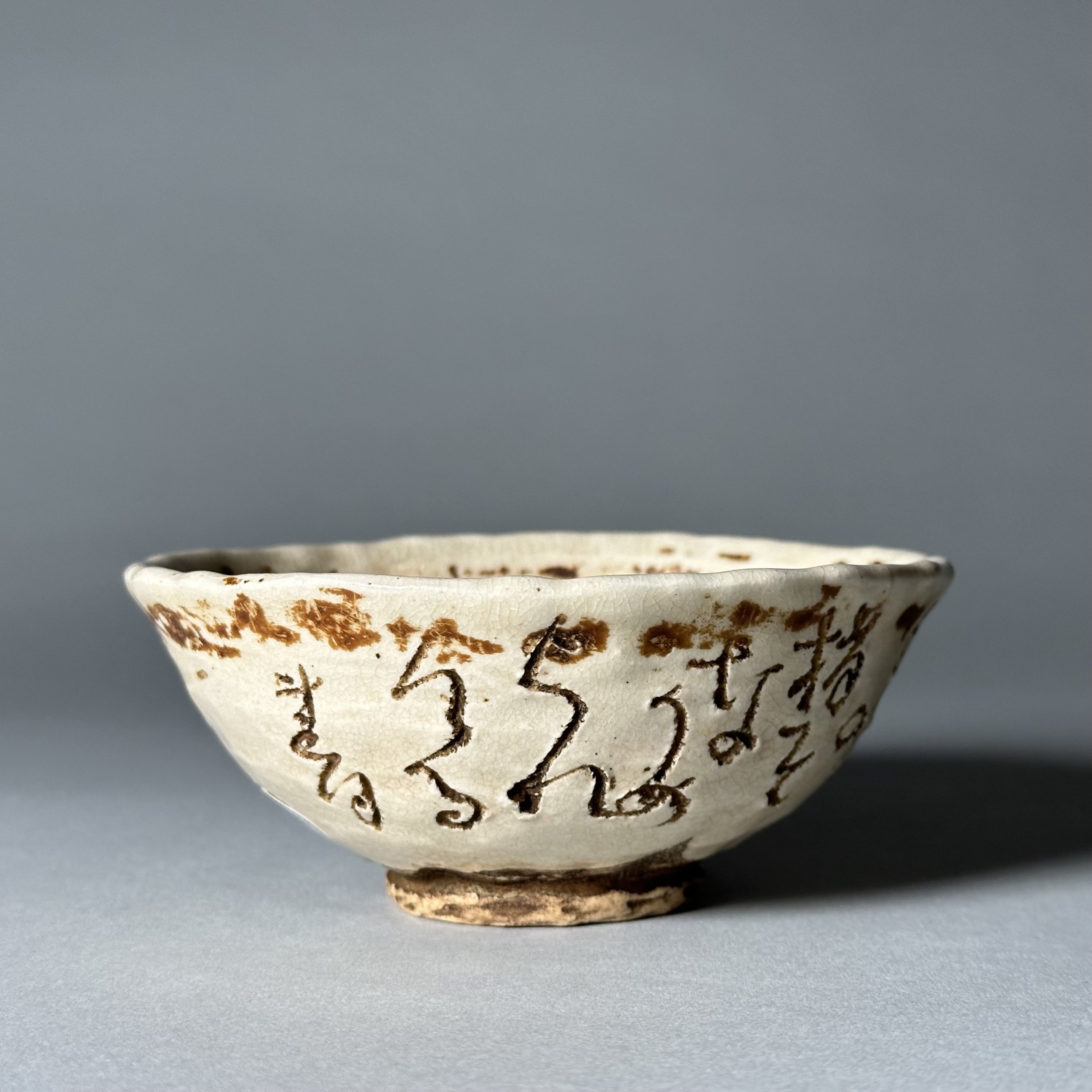 Image 1 of 12
Image 1 of 12

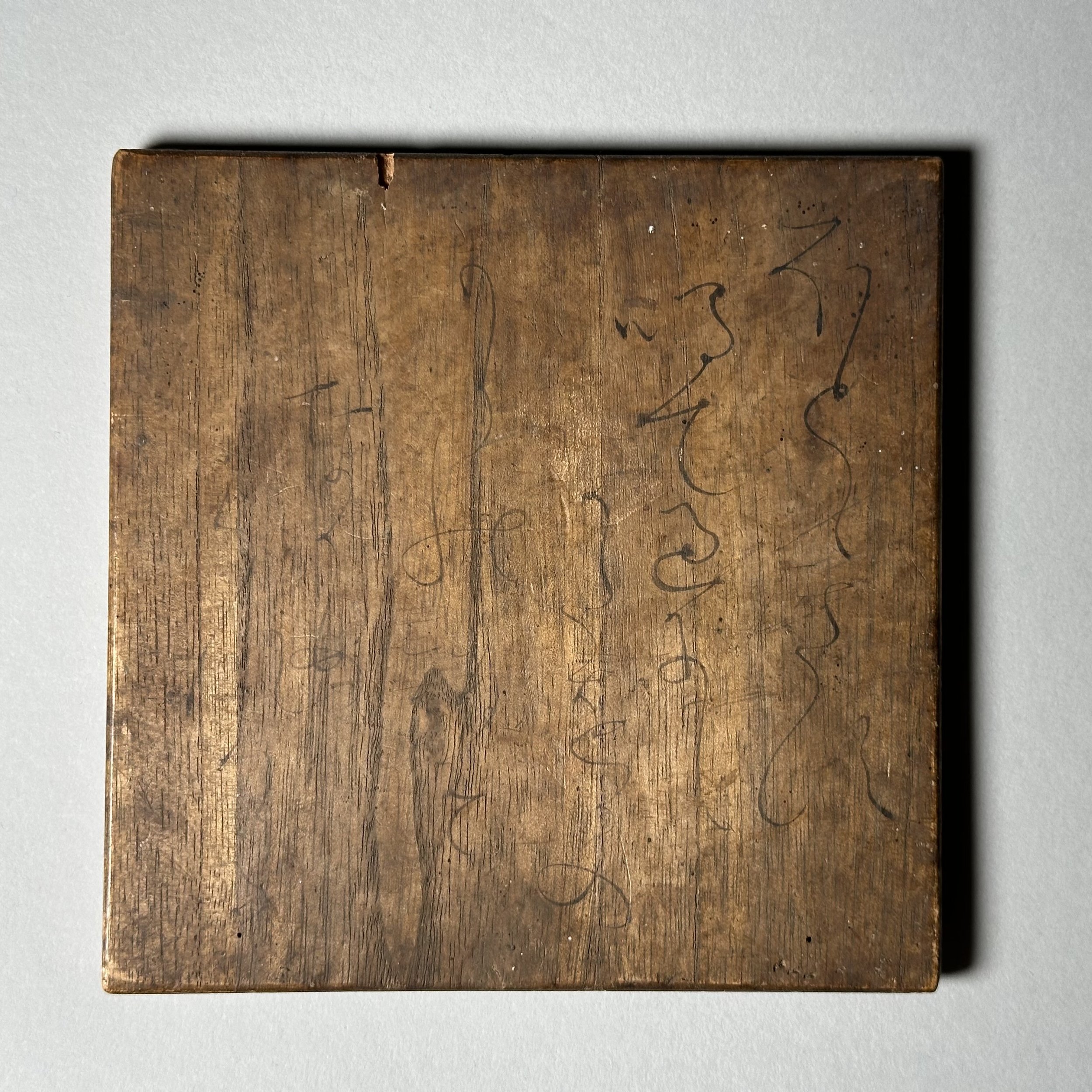 Image 2 of 12
Image 2 of 12

 Image 3 of 12
Image 3 of 12

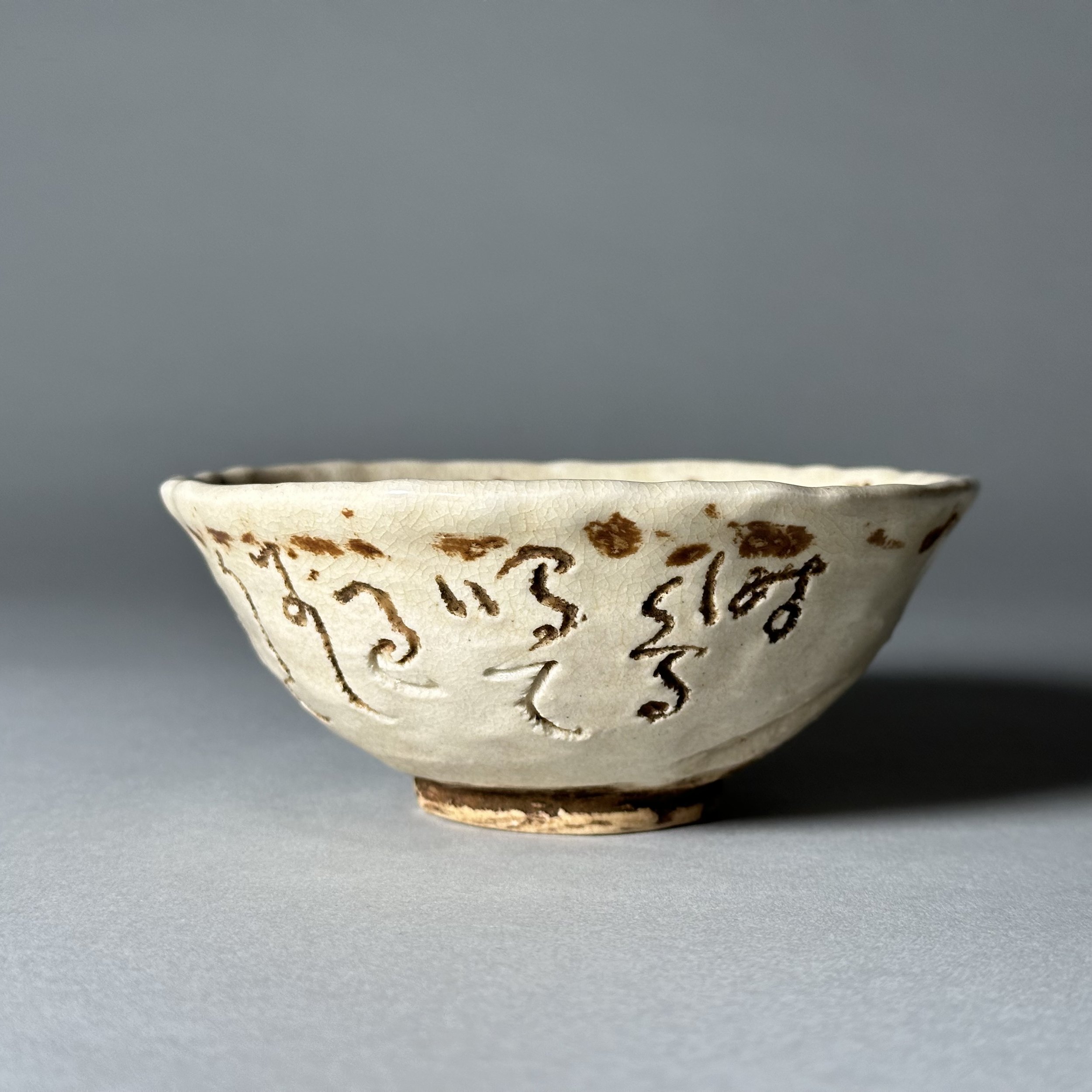 Image 4 of 12
Image 4 of 12

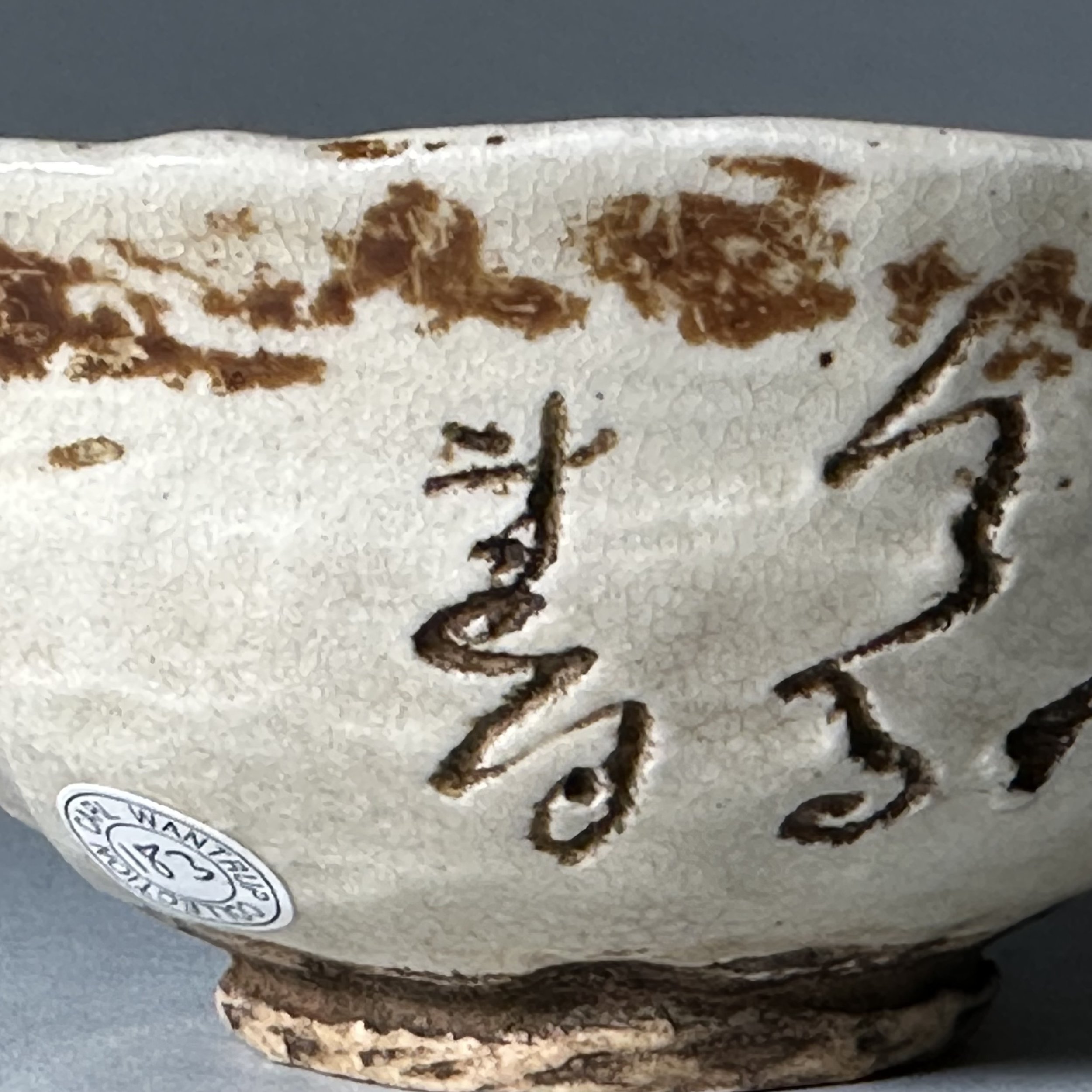 Image 5 of 12
Image 5 of 12

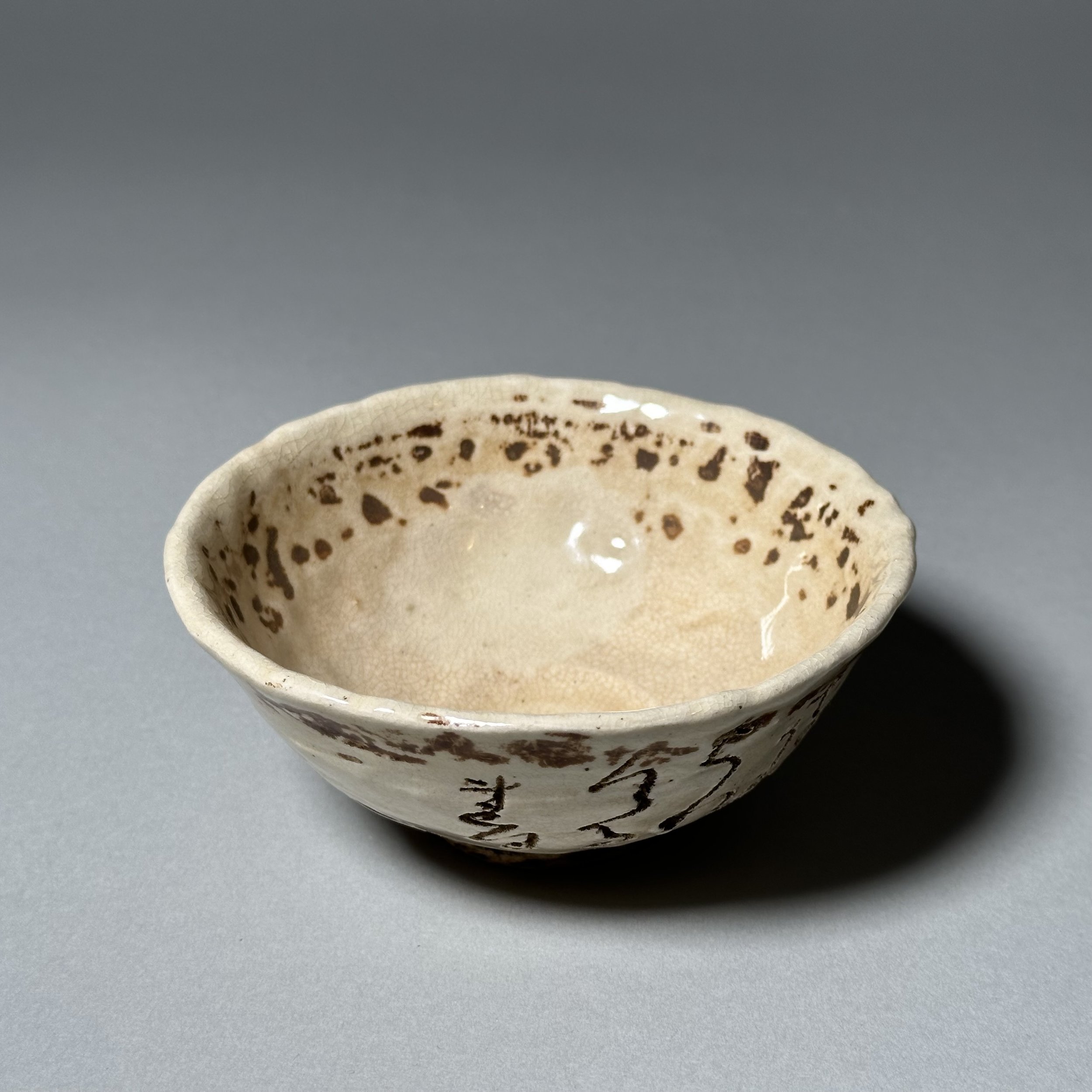 Image 6 of 12
Image 6 of 12

 Image 7 of 12
Image 7 of 12

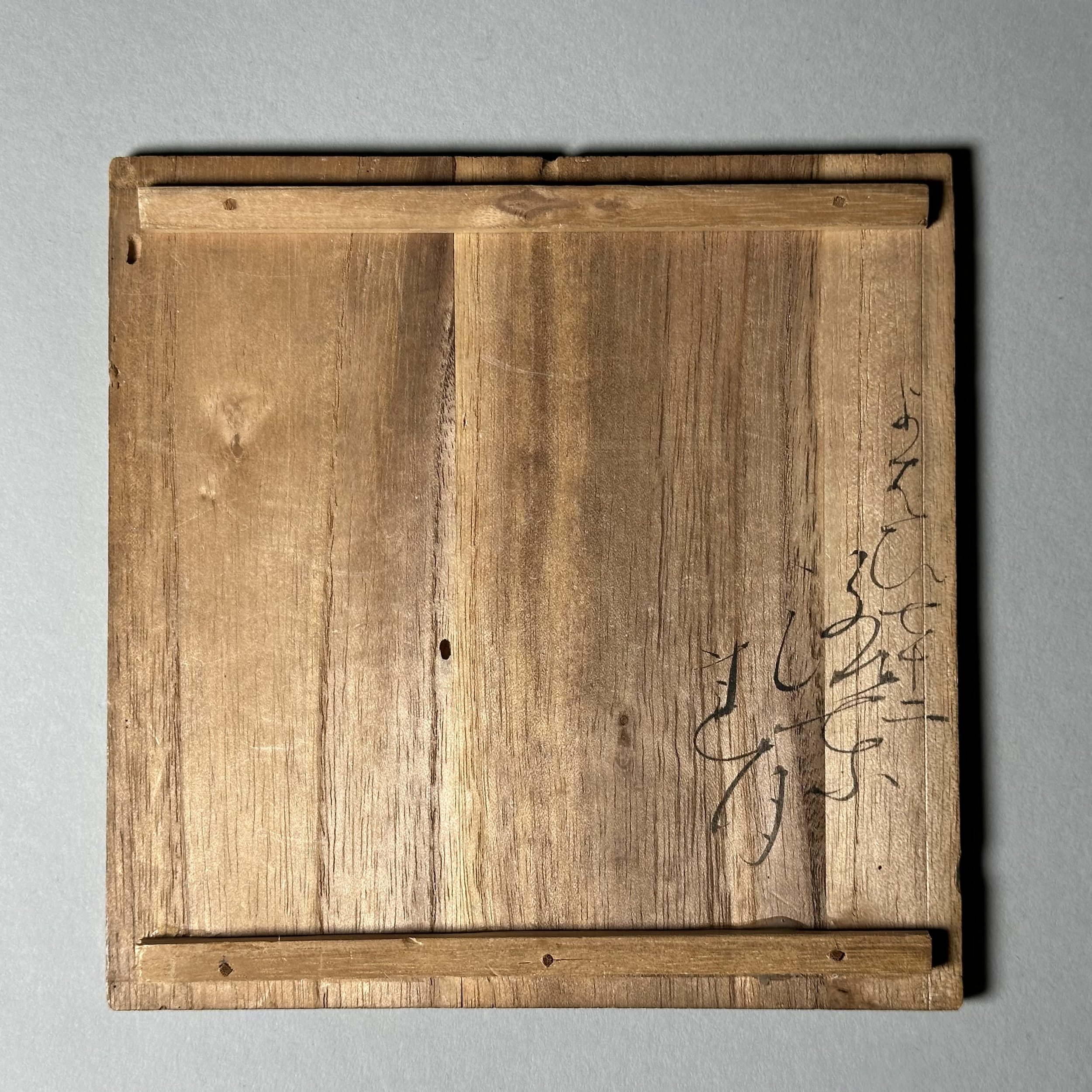 Image 8 of 12
Image 8 of 12

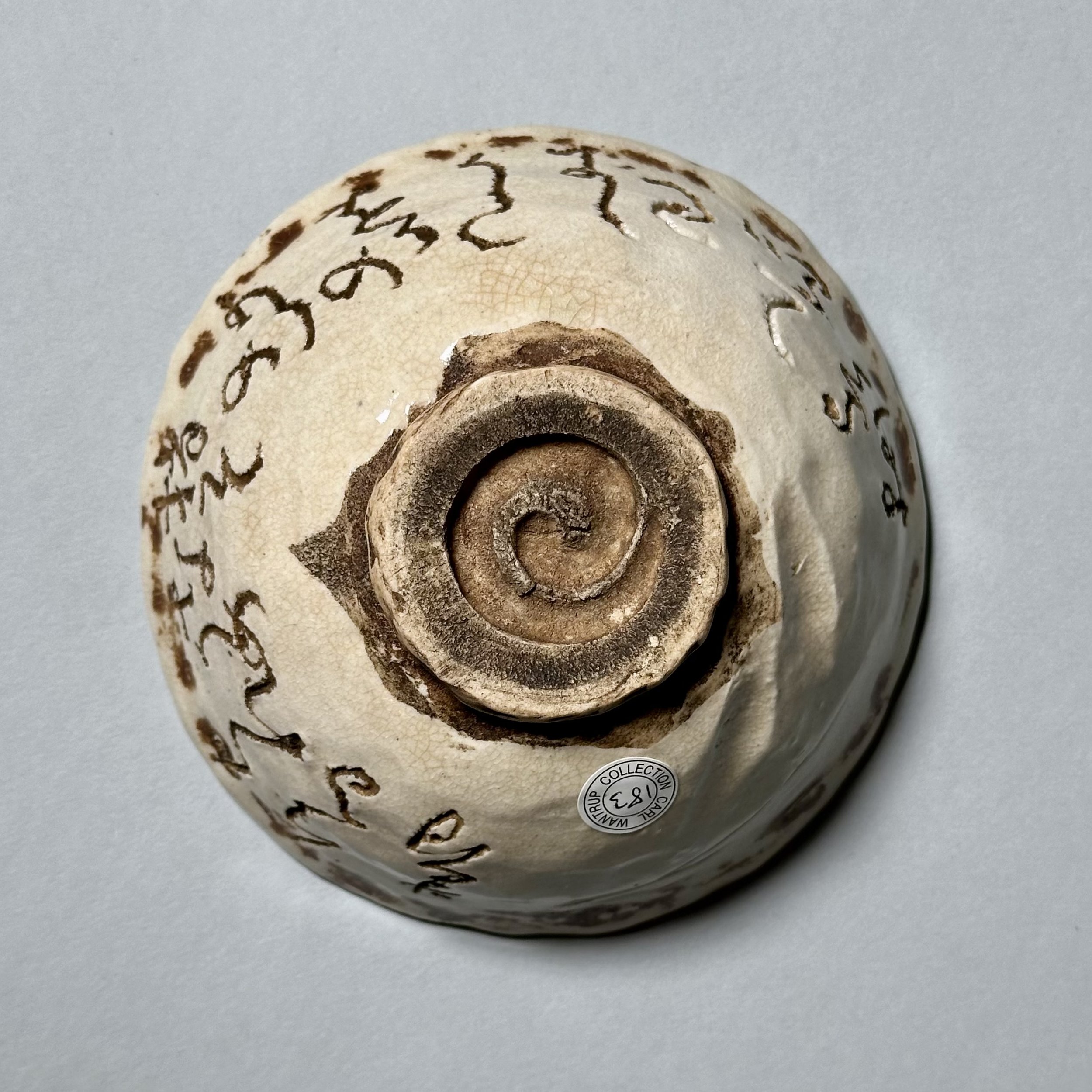 Image 9 of 12
Image 9 of 12

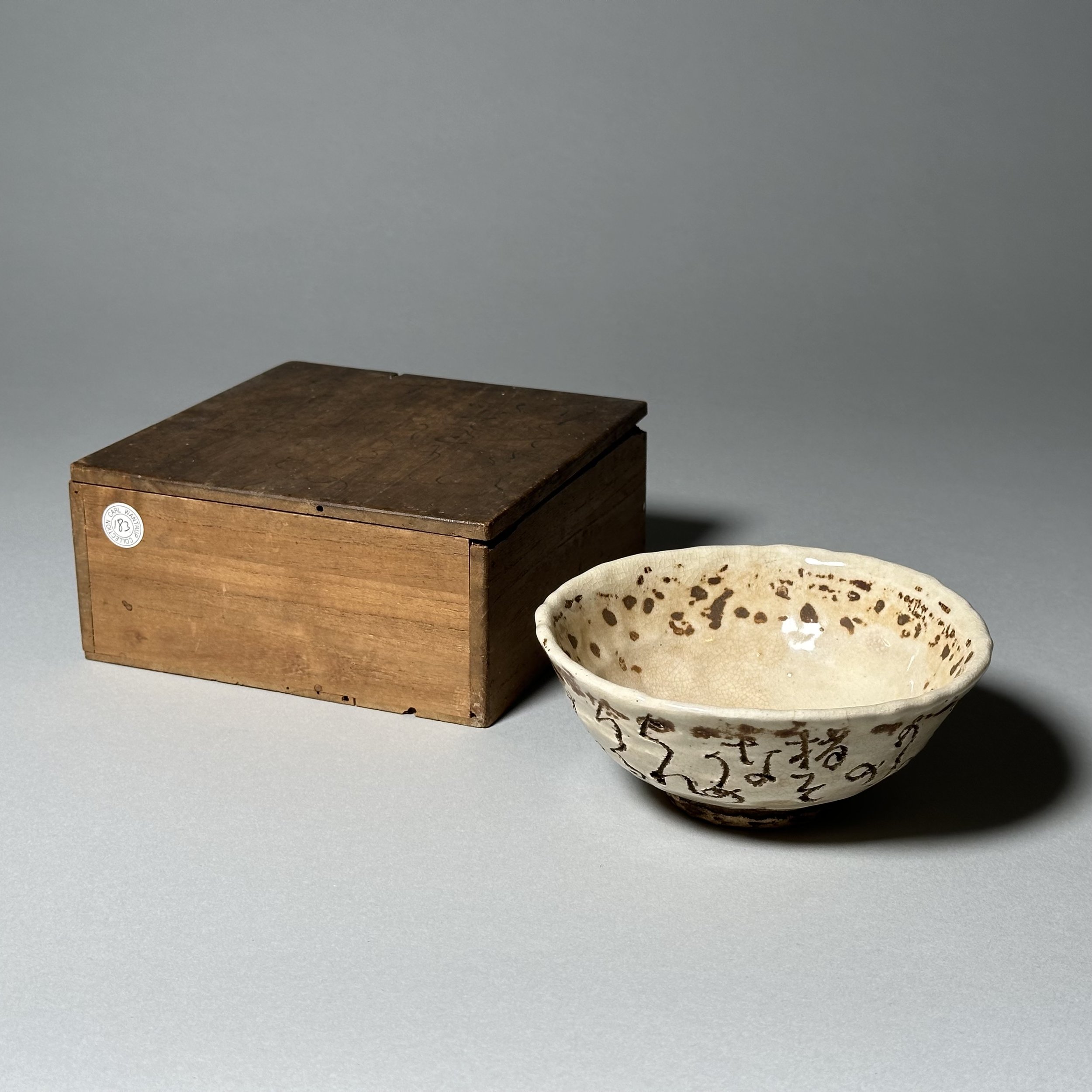 Image 10 of 12
Image 10 of 12

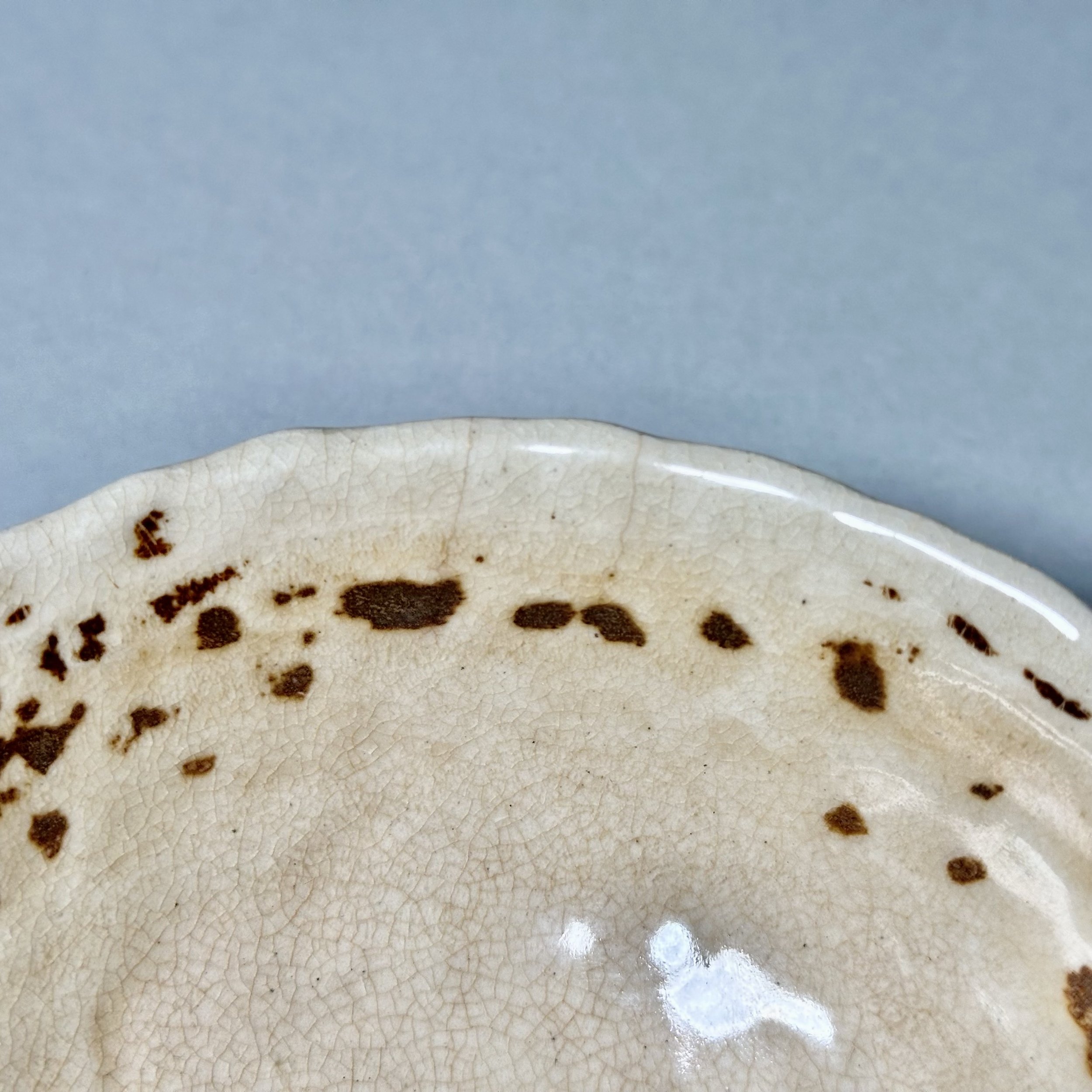 Image 11 of 12
Image 11 of 12

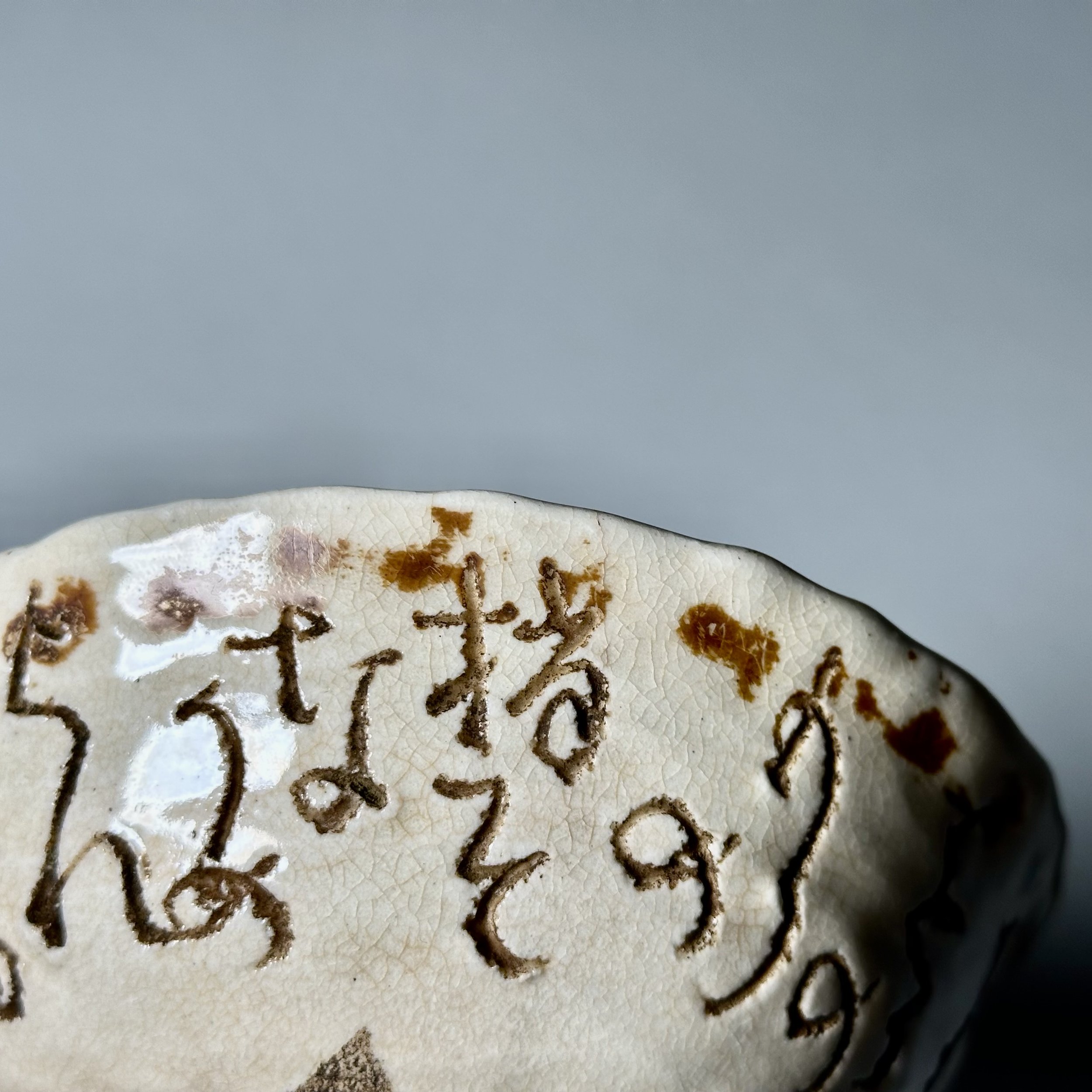 Image 12 of 12
Image 12 of 12













Tea bowl (chawan) with waka poem by Otagaki Rengetsu (1791-1875)
Kyoto, Japan
Edo (1603-1868) or Meiji (1868-1912) Period, circa mid 19th Century
Pinch-potted, glazed stoneware with incised waka poem to the exterior translating to:
A little cuckoo, crying out on his way to Kamaoka, suddenly darts into a deep forest
5.2cm high, 12.75cm diameter.Together with its tomobako (original Japanese wooden box) inscribed by Rengetsu with the same waka poem to the top of the lid, and signed to the interior of the lid. It is exceedingly rare to find her work still enclosed in the original tomobako, particularly when inscribed with the same waka as present on the piece. Two small hairline cracks to the rim.
Cat. 183
* English translation courtesy of The Rengetsu Foundation Project (rengetsu.org)
Otagaki Rengetsu (1791-1875)
Rengetsu is one of the great female artists of Japanese history. Born as the secret child of a nobleman and a courtesan, she was given up for adoption into another family, married young and suffered a sad life through the loss of family members including all of her children, eventually becoming a Buddhist nun of the Pure Land sect at the age of 33. Through her courtly training as a lady-in-waiting in Kamaoka Castle, she became adept at the noble arts of calligraphy, painting and poetry, and became renowned as a master composer of waka poetry (17-syllable poetry) and for her delicate grass-script calligraphy. She also began potting in clay and and inscribed her original poetry onto her pots. Somehow her sad life, in conjunction with her humility as a Buddhist nun, distilled itself into her superb calligraphy and her innocent but sensitive waka poems. In this way she has become one of the giants of Japanese calligraphy and poetry whose timeless work still speaks to us today.
Kyoto, Japan
Edo (1603-1868) or Meiji (1868-1912) Period, circa mid 19th Century
Pinch-potted, glazed stoneware with incised waka poem to the exterior translating to:
A little cuckoo, crying out on his way to Kamaoka, suddenly darts into a deep forest
5.2cm high, 12.75cm diameter.Together with its tomobako (original Japanese wooden box) inscribed by Rengetsu with the same waka poem to the top of the lid, and signed to the interior of the lid. It is exceedingly rare to find her work still enclosed in the original tomobako, particularly when inscribed with the same waka as present on the piece. Two small hairline cracks to the rim.
Cat. 183
* English translation courtesy of The Rengetsu Foundation Project (rengetsu.org)
Otagaki Rengetsu (1791-1875)
Rengetsu is one of the great female artists of Japanese history. Born as the secret child of a nobleman and a courtesan, she was given up for adoption into another family, married young and suffered a sad life through the loss of family members including all of her children, eventually becoming a Buddhist nun of the Pure Land sect at the age of 33. Through her courtly training as a lady-in-waiting in Kamaoka Castle, she became adept at the noble arts of calligraphy, painting and poetry, and became renowned as a master composer of waka poetry (17-syllable poetry) and for her delicate grass-script calligraphy. She also began potting in clay and and inscribed her original poetry onto her pots. Somehow her sad life, in conjunction with her humility as a Buddhist nun, distilled itself into her superb calligraphy and her innocent but sensitive waka poems. In this way she has become one of the giants of Japanese calligraphy and poetry whose timeless work still speaks to us today.
